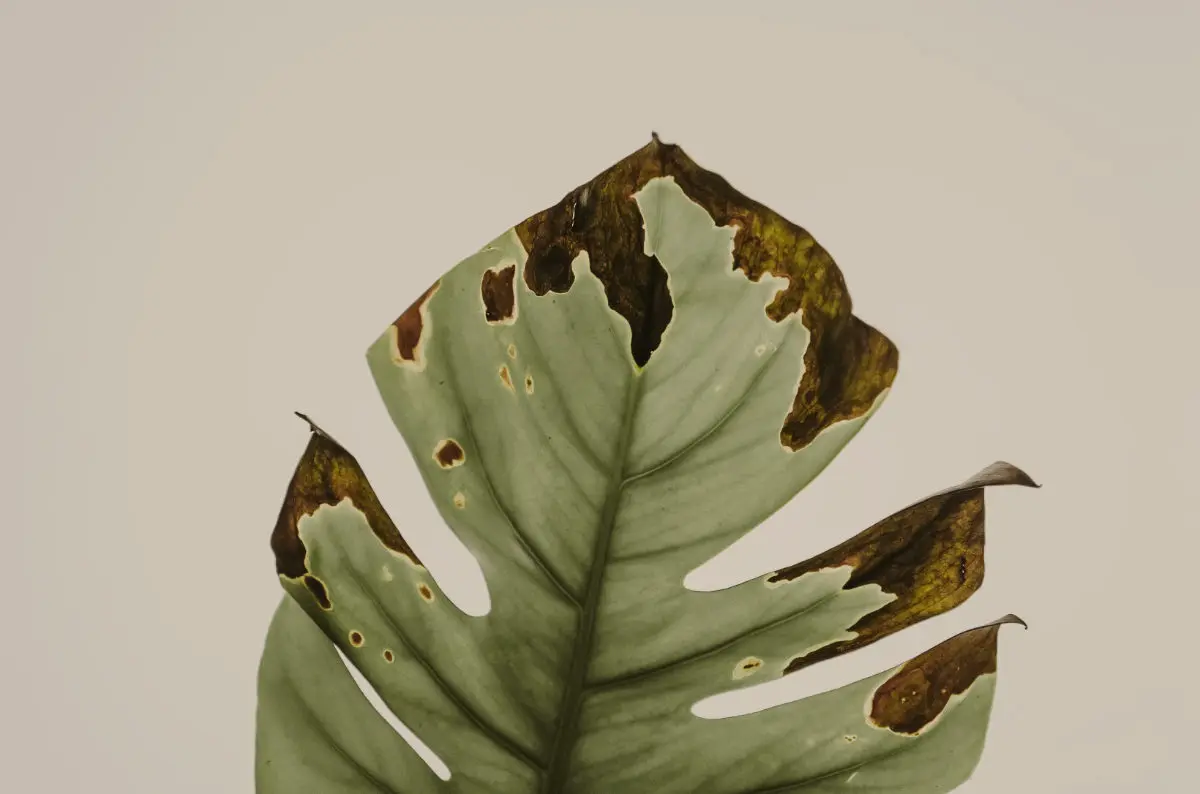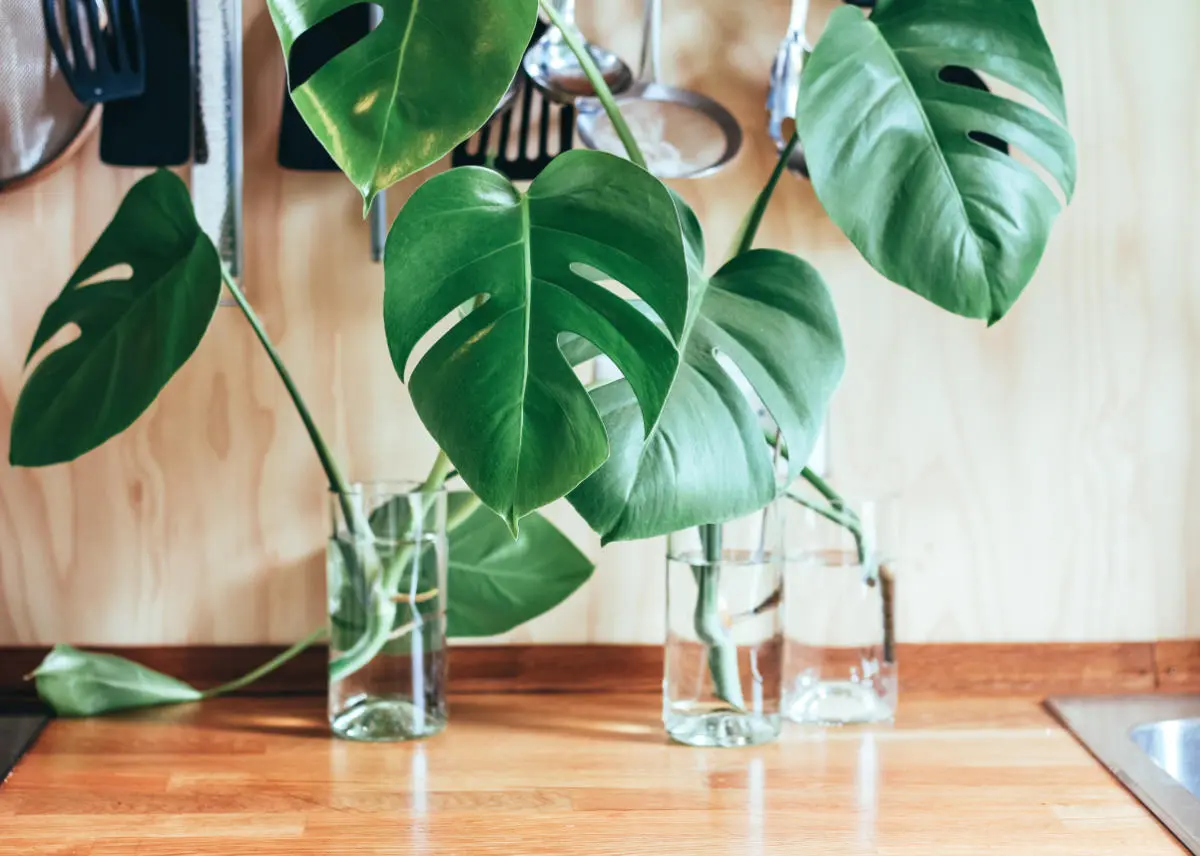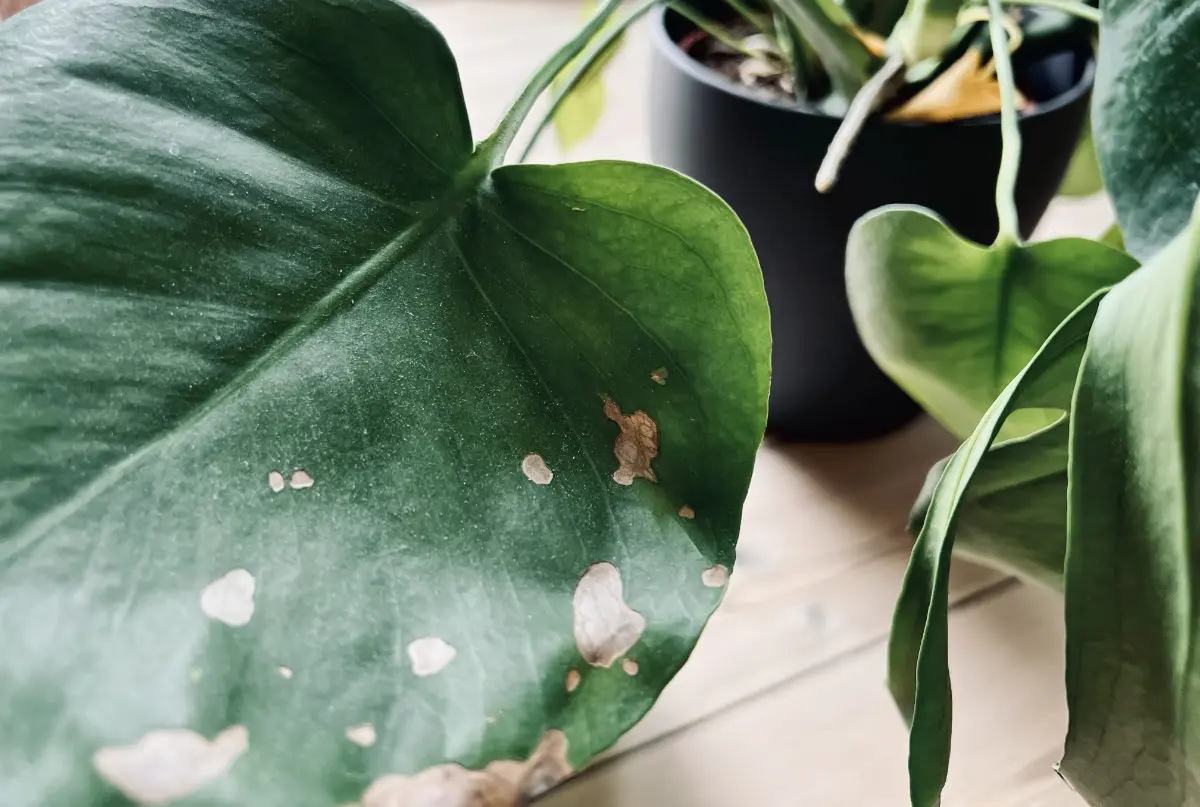How to Stake a Monstera. A Step-by-Step Tutorial
Staking a Monstera is essential to help it grow upright and support its large leaves. Follow this step-by-step guide to learn how to properly stake your Monstera plant for optimal growth and health.
By Tobias Holm
Are you ready to take your plant-parenting skills to the next level? If you've ever marveled at the lush and sprawling beauty of a Monstera plant and wondered how to achieve the same stunning growth in your own space, then you're in for a treat.
In this step-by-step tutorial, we will guide you through the art of staking a Monstera plant, allowing you to create a masterpiece of greenery in your home or garden. From selecting the perfect stake to understanding the proper technique for attaching and supporting your plant, we'll cover it all.
Whether you're a seasoned gardener looking to expand your repertoire or a beginner eager to learn the secrets of Monstera mastery, this tutorial is your ultimate guide.
Get ready to unlock the secrets of staking a Monstera plant and transform your space into a botanical paradise. So, grab your gardening gloves and let's dive in!
What is plant staking?
Plant staking is a horticultural technique that involves providing support to plants, helping them grow upright and preventing them from sprawling or bending under their weight. It is particularly beneficial for plants with long, trailing stems or heavy foliage, such as the Monstera plant.
By staking your Monstera, you can guide its growth, enhance its aesthetic appeal, and promote healthier and more vigorous growth. Staking also helps prevent damage to the plant and reduces the risk of breakage, especially when the plant reaches a certain height or size. Additionally, staking can create a structured and organized look, allowing you to showcase your Monstera as a stunning centerpiece.
Staking a Monstera plant involves a few key steps, starting with assessing the plant's growth and support needs. Let's explore why staking is important for a Monstera and when the best time is to stake your plant.
Why stake a Monstera plant?
The Monstera plant, also known as the Swiss cheese plant, is famous for its large, glossy, and fenestrated leaves. As these leaves grow larger, the stems can become top-heavy and may struggle to support the weight. Without proper support, the stems may bend or break, resulting in an unattractive and unhealthy appearance.
Staking your Monstera plant not only prevents these issues but also promotes more upright growth, allowing the plant to reach its full potential and showcase its stunning foliage. Staked Monstera plants tend to have larger and more vibrant leaves, as the energy that would have been spent on supporting the stems can now be redirected towards leaf production and overall growth.
So, by staking your Monstera, you're not only ensuring its health but also enhancing its beauty.
When to stake a Monstera plant?
Knowing when to stake your Monstera plant is crucial to its successful growth and development. While it's best to stake your plant when it's still young, it's never too late to provide support for an older Monstera.
However, keep in mind that staking a mature Monstera may require more effort and care. It's generally recommended to stake your Monstera when it reaches a height of around 12 inches or when the stems start to show signs of bending or drooping. By staking the plant at an early stage, you can guide its growth and prevent any potential issues before they become more challenging to address.
If you've missed the ideal staking window, don't worry; you can still stake your mature Monstera and enjoy the benefits of this technique.
Tools and materials needed for staking
Before you begin staking your Monstera plant, it's essential to gather the necessary tools and materials. Here's a list of what you'll need:
- Stakes: Choose stakes that are sturdy, durable, and long enough to support the height of your Monstera plant. Bamboo stakes are a popular choice due to their strength and natural appearance.
- Support structure: Depending on the size and growth pattern of your Monstera, you may need additional support structures, such as trellises, moss poles, or plant cages. These structures provide stability and help guide the growth of your plant.
- Garden twine or soft ties: Use garden twine or soft ties to secure the Monstera to the stake or support structure. Ensure that the material you choose is gentle on the plant's stems and won't cause damage or constriction.
- Scissors or pruners: Keep a pair of scissors or pruners handy to trim any excess twine or remove dead or damaged plant parts during the staking process.
- Gloves: It's always a good idea to wear gloves while working with plants to protect your hands from any potential thorns, dirt, or irritants.
Now that you have all the necessary tools and materials ready, it's time to dive into the step-by-step process of staking your Monstera plant. Let's get started.
Step 1: Assess the plant's growth and support needs
Before you begin staking your Monstera plant, take a close look at its growth pattern and determine the type and amount of support it requires. Assessing the plant's growth will help you choose the most suitable stake and support structure.
Start by examining the stems of your Monstera. Are they bending or drooping? Are the leaves struggling to support their own weight? These are signs that your plant needs support. Additionally, consider the overall size and height of your Monstera, as this will determine the length and strength of the stake you'll need.
By understanding your plant's growth and support needs, you can ensure that the staking process is effective and beneficial for your Monstera.
Step 2: Choose the right stake and support structure
Selecting the right stake and support structure is crucial for the successful staking of your Monstera plant. As mentioned earlier, bamboo stakes are a popular choice due to their strength and natural appearance.
However, you can also opt for other materials such as wooden dowels or metal rods, depending on your preference and the aesthetic you're aiming for. The length of the stake should be determined by the height of your Monstera, ensuring that it provides adequate support.
If your Monstera has multiple stems or is particularly large, you may also need to consider using a trellis, moss pole, or plant cage for additional support. These structures can be placed near the base of the plant and secured to the stake, providing stability and guiding the growth of your Monstera.
Step 3: Prepare the plant for staking
Now that you have your stake and support structure ready, it's time to prepare your Monstera for staking.
Gently loosen the soil around the base of the plant to expose the roots and ensure that the stake can be inserted without damaging them. If your Monstera is already potted, you may need to carefully lift it out of its container to access the root system. Be cautious not to disturb the roots excessively, as this can cause stress to the plant.
If necessary, you can also prune any dead or damaged leaves or stems to promote healthier growth. By preparing your Monstera for staking, you're creating the ideal conditions for successful support and growth.
Step 4: Install the stake and support structure
With your Monstera prepared, it's time to install the stake and support structure.
Place the stake in the soil, ensuring that it's positioned close to the base of the plant. Insert it deep enough to provide stability but be careful not to damage the roots. If you're using a trellis, moss pole, or plant cage, position it near the stake and secure it firmly in the soil. Ensure that the support structure is tall enough to accommodate the growth of your Monstera.
The goal is to guide the plant's stems upward, so the stake and support structure should be slightly taller than the current height of the Monstera. By installing the stake and support structure correctly, you're laying the foundation for a well-supported and beautifully growing Monstera.
Step 5: Secure the plant to the stake
Now that the stake and support structure are in place, it's time to secure your Monstera to them.
Start by gently lifting and positioning the stems of the plant near the stake. Avoid bending or twisting the stems excessively, as this can cause damage. Use garden twine or soft ties to secure the stems to the stake or support structure.
Begin at the base of the plant and work your way up, tying the twine or soft ties at regular intervals along the stems. Be careful not to tie the plant too tightly, as this can constrict growth and cause damage. Leave some slack to accommodate the natural movement and growth of the Monstera.
By securing your Monstera properly, you're ensuring that it receives the support it needs while still allowing room for healthy growth.
Step 6: Monitor and adjust the staking as needed
Staking your Monstera plant is not a one-time task; it requires ongoing monitoring and adjustment.
As your Monstera grows, it may outgrow the initial support you provided or develop new stems that need guidance. Regularly inspect your plant and make any necessary adjustments to the staking. This may involve repositioning the twine or soft ties, tightening or loosening them, or adding additional support structures.
Pay attention to any signs of stress or discomfort in your Monstera, such as bent or drooping stems, and address them promptly. By actively monitoring and adjusting the staking, you're ensuring that your Monstera receives continuous support and can thrive to its full potential.
Troubleshooting common staking issues
While staking your Monstera plant, you may encounter some common issues or challenges. Here are a few troubleshooting tips to help you overcome them:
- Stem breakage: If a stem breaks or bends excessively, gently prune it and provide additional support. Trim any damaged parts and secure the healthy portions to the stake or support structure.
- Constricted growth: If you notice that your Monstera's growth is becoming constricted or the stems are becoming too tight, loosen the twine or soft ties slightly to allow for more movement and growth.
- Inadequate support: If your Monstera is outgrowing its initial support, consider adding additional stakes or support structures. These can be placed strategically to provide the necessary support and guide the growth of your plant.
- Uneven growth: Sometimes, a Monstera may grow unevenly, with some stems outpacing others. In such cases, gently guide the faster-growing stems towards the support structure, ensuring that all parts of the plant receive equal support and grow harmoniously.
By troubleshooting these common staking issues, you can overcome any challenges and ensure the successful growth and development of your Monstera plant.
Tips for maintaining a staked Monstera plant
Once you've successfully staked your Monstera plant, there are a few tips you can follow to maintain its health and beauty:
- Watering: Ensure that your Monstera receives adequate water but avoid overwatering, as this can lead to root rot. Check the soil moisture regularly and water when the top inch of soil feels dry.
- Lighting: Monstera plants thrive in bright, indirect light. Place your staked Monstera near a window where it can receive ample filtered sunlight. Avoid placing it in direct sunlight, as this can scorch the leaves.
- Fertilizing: Feed your Monstera with a balanced fertilizer during the growing season to promote healthy growth and vibrant foliage. Follow the instructions on the fertilizer packaging for the recommended dosage and frequency.
- Pruning: Regularly prune your Monstera to remove any dead or damaged leaves or stems. This will promote better air circulation, reduce the risk of pests and diseases, and maintain the overall appearance of your plant.
- Cleaning: Dust can accumulate on the large leaves of a Monstera plant, affecting its ability to photosynthesize. Wipe the leaves gently with a damp cloth or use a gentle spray of water to keep them clean and free from dust.
By following these maintenance tips, you can ensure that your staked Monstera plant remains healthy, vibrant, and a focal point of your space.
Conclusion
You've now mastered the art of staking a Monstera plant.
By following this step-by-step tutorial, you've learned how to select the right stake and support structure, prepare your Monstera for staking, and secure it properly.
Remember to regularly monitor and adjust the staking as needed, troubleshooting any issues that may arise. With proper staking and maintenance, your Monstera will flourish, showcasing its lush foliage and becoming a stunning centerpiece in your home or garden. So, go ahead and put your newfound knowledge into practice.
Transform your space into a botanical paradise by staking a Monstera plant and enjoying the beauty of nature in all its glory!



